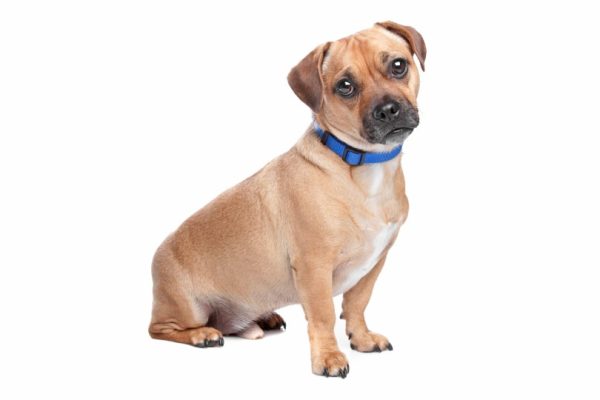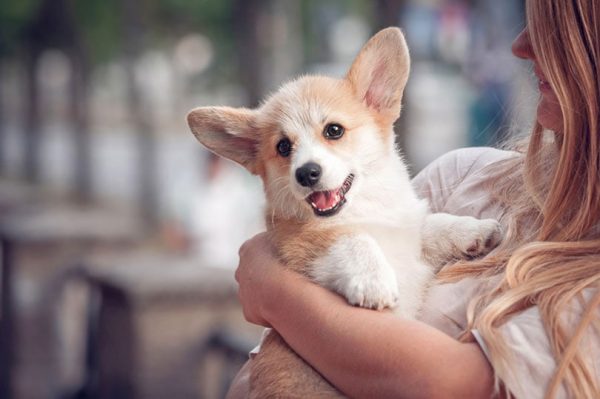In this article
View 8 More +Many dog enthusiasts claim that the Irish Setter is the most beautiful breed to ever exist, due in part to their flowing luxurious hair, endearing expression, and regal behavior. The typical Irish Setter’s personality is fun-loving, playful, and affectionate when it comes to interacting with their human and dog companions. Let’s take a closer look at this interesting breed!
Breed Overview
Height:
22–26 inches
Weight:
55–70 pounds
Lifespan:
12–15 years
Colors:
Chestnut, mahogany, red
Suitable for:
Active families, sporting and hunting enthusiasts, houses with yards
Temperament:
Spirited, independent, affectionate, playful, active, athletic
Irish Setters are a mixture of fun, seriousness, loyalty, and stubbornness. These determined dogs love adventure and outdoor activities. They tend to play by their own rules when they can get away with it, but they are smart and like to please their companions, so they typically take well to training.
Irish Setter Characteristics

Irish Setter Puppies

As puppies, Irish Setters are curious, rambunctious, and all over the place. They’ll leave no corner or closet unturned during their daytime adventures around the house. They learn from their mothers and siblings during their first few weeks of life, then move on to learning from the human companions that they regularly interact with.
Generally, this is a slow-maturing dog breed in terms of mental and physical attributes. They won’t reach their full growth potential until they’re between 2 and 3 years old, and they tend to hold on to some of their puppy behavior and personality for a lifetime.
Irish Setter Origin & History
While the exact origin of the Irish Setter is not known, it is believed that they were developed from a mix of the English and Gordon Setters, Spaniels, and Pointers. It seems that their earlier ancestors had coats of a combination of red and white fur, not solid red or mahogany like the Irish Setters that we know today. The solid red Irish Setter is said to have originally appeared during the 18th century in Ireland.
Like all other Setters, this breed seems to have been developed for hunting. They would locate and “point toward” prey birds in the uplands. They excelled at their jobs due to their ability to traverse extreme terrains and their amazing scent receptors. It is reported that the Irish Setter first set “paw” on land in the United States during the early 19th century.


Temperament & Intelligence of the Irish Setter 🧠
The Irish Setter displays a mixture of different behaviors and temperaments that makes it interesting to spend time with them. Many are smart and fun-loving, which can result in entertainment for the whole family while spending time in the backyard during a summertime barbecue. However, some are more adventurous and independent. They prefer spending most of their time walking, hiking, hunting, camping, or swimming at the beach. Then there are those that like to keep more to themselves and spend time with just their immediate companions within the household. Other Irish Setters display a combination of all these traits.
One thing is for sure: The Irish Setter is never boring, lazy, or sensitive when it comes to facing challenges and excitement throughout their lives.
Are These Dogs Good for Families? 🏡
The Irish Setter can be a good fit for active families that like to hike, hang out at the park, camp, hunt, or farm, among other similar activities. They yearn to be outside where they can be free to explore their surroundings and engage in a job that makes their caretakers proud. They can get along well with kids under supervision, and they will protect their family members with everything they’ve got when push comes to shove.

Does This Breed Get Along With Other Pets?
Yes, the Irish Setters can get along with other pets that live in their household. These outgoing dogs seem to thrive on having friends, so they take well to fellow canines and are happy to be part of a pack anywhere. They can also get along with cats if they socialize with them while still puppies.
Things to Know When Owning an Irish Setter
Food & Diet Requirements 🦴
When it comes to keeping the Irish Setter fed, you should know that this active breed likes to eat as much as they can and as fast as they can. This means they tend to swallow excess amounts of air while consuming food, making this breed susceptible to developing a serious condition called bloat, or gastric dilatation-volvulus. This problem develops when the stomach fills with gas and twists on itself.
When this happens, the blood supply to the stomach is cut off and food and water cannot pass through the digestive system. This condition, if left unchecked, can quickly become fatal. Therefore, take steps to minimize the risk of bloat development by utilizing a slow-feeder bowl during mealtimes.

Exercise 🐕
Exercise is essential to the health and happiness of the Irish Setter. This active and athletic dog doesn’t like sitting around all day in a house or a yard. They must go outdoors for at least 1 hour of vigorous exercise each day to maintain their mental and physical health. As senior dogs, their energy levels and exercise requirements will decrease, though only slightly.
These dogs should get exercise in the form of brisk walking, jogging, hiking, swimming, agility training, and hunting. A certain amount can be experienced in a fenced yard when playing with the kids or engaging in games like fetch. When it’s too dark, cold, or hot to engage in outdoor activity, games like “hide-and-seek” and puzzle toys can offer low-key exercise options indoors.
Training 🦮
This intelligent breed can take well to training, especially if it’s implemented during puppyhood. The Irish Setter needs training to ensure that they behave as expected both inside and outside the house. Without obedience training, this breed is likely to become hard-headed and stubborn, doing only what they want and ignoring commands that they aren’t interested in following.

Grooming ✂️
Irish Setters are shedders and require regular brushing to keep their coats looking supple and healthy. Using a soft bristle or pin brush two or three times a week should be sufficient. A long-toothed comb might be necessary occasionally to get rid of tangles. Bathing is not necessary unless obvious dirt and/or mud has built up in the coat. Some owners choose to trim their dog’s hair to keep it looking its best as time goes on.
Health and Conditions ❤️
As with most well-bred dogs, the Irish Setter is generally healthy. However, there are a few hereditary health conditions that they could be predisposed to. Good breeders should conduct testing and ensure that they are not breeding these issues into their pups.
- Dental disease
- Thyroid problems
- Eye disorders
- Allergies
- Hip and elbow dysplasia
- Bloat
- Neurological problems
Male vs. Female
There are not any serious differences between male and female Irish Setters to support. Some people think that their females are more independent, but no research has been done on the topic. One thing is for sure, though: Both males and females will look to procreate during the times of year that it is appropriate if they have not been spayed or neutered.
 3 Little-Known Facts About the Irish Setter
3 Little-Known Facts About the Irish Setter
1. They Used to Be Called the Irish Red Setter
In the United States, this breed was once referred to as the Irish Red Setter to help ensure that they were distinguished from the Red and White Setters that were also popular in Ireland.
2. They Are Slow to Mature
The Irish Setter Club of America states that this breed matures slowly, both in terms of mentality and physicality. They tend to keep their puppyhood nature throughout their lives.
3. They Tend to Be Outgoing
These dogs maintain outgoing attitudes both at home and in public situations. They happily greet guests when their human companions are at home, and they don’t mind meeting new people and dogs at parks and other places where socialization is natural.
 Final Thoughts
Final Thoughts
Irish Setters are intelligent, playful, athletic, active, and outgoing. They have so much going for them! These dogs deserve happy homes with active families or singles who want to go on adventures with their companions for many years to come.
See also:
Featured Image Credit: Kseniia Kolesnikova, Shutterstock



















